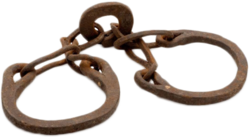"Field Negro" redirects here. For story of the house Negro and the field Negro, see House Negro and Message to the Grass Roots.
For the 2015 documentary film, see Field Niggas.
See also: Treatment of slaves in the United States
This article may need to be rewritten to comply with Wikipedia's quality standards. You can help. The talk page may contain suggestions.(June 2025) |
Field hands were slaves who labored on plantations. They were commonly used to plant, tend, and harvest cotton, sugar, rice, and tobacco.
